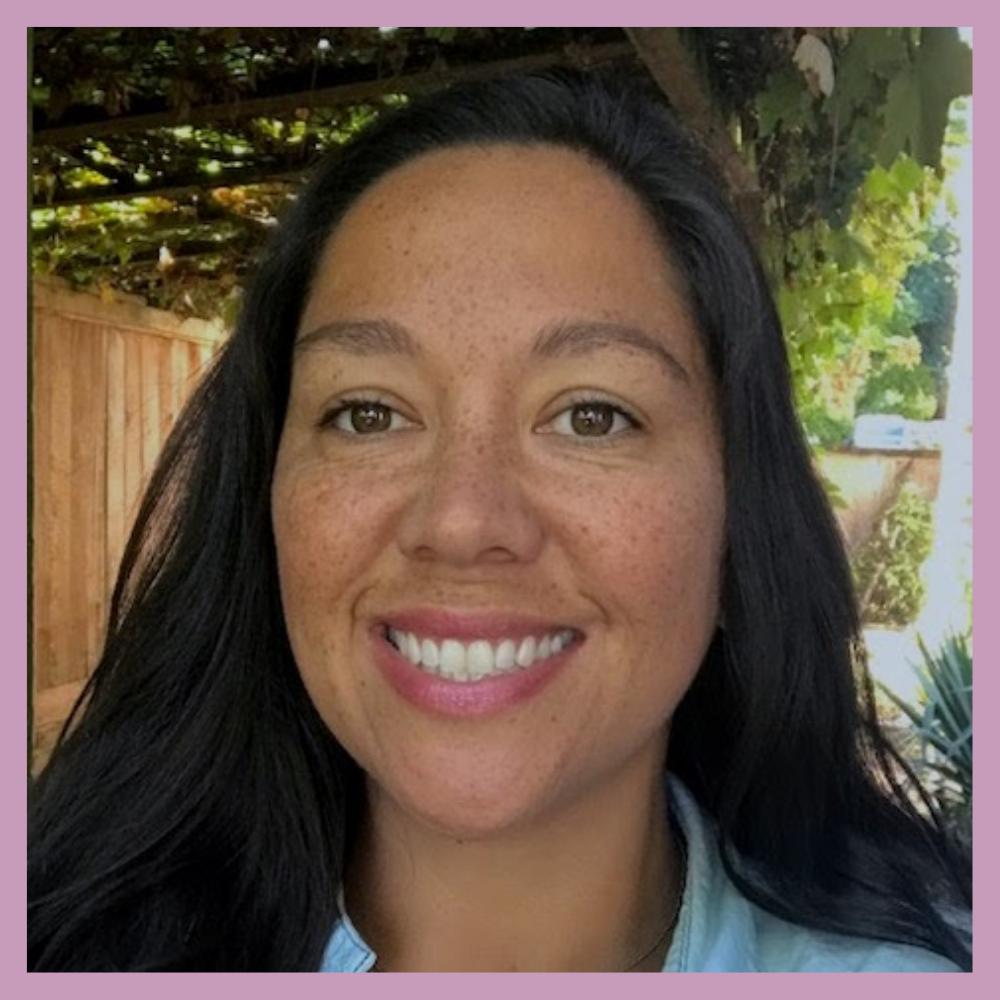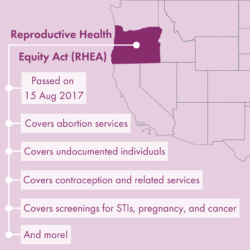Mar
18
2020
Written by Catherine Foley
Our newest report, Collaboration Across Race in the Reproductive Movement: A Case Study of the Reproductive Health Equity Act in Oregon, focuses on how advocates passed one of the most comprehensive reproductive health bills in the nation. The report highlights how, after failing to pass a similar bill in 2015, the coalition that led the fight for RHEA’s passage built a more diverse – and winning – steering committee that brought together traditionally white-led reproductive rights organizations with reproductive justice organizations led by women of color.

To shed further light on the RHEA story, we interviewed Zeenia Junkeer, Director of the Oregon Health Equity Alliance (OHEA). We talked to Zeenia about her time with both NARAL Pro-Choice Oregon and OHEA, her thoughts on RHEA, and why including communities color is the strategy to win. We’ve included excerpts of the conversation below.
You’ve worked at two very different organizations, both of which were key members of the coalition that fought for RHEA’s passage. What insight does that give you about the range of organizations in the coalition and their relationships with one another?
Before leading the Oregon Health Equity Alliance, I worked at NARAL Pro-Choice Oregon. When I worked at NARAL, one of the things that I was charged with was being our liaison to the OHEA coalition. OHEA is a tri-county health equity alliance that is led by culturally specific community-based organizations, a number of whom were at the RHEA table. Every two years, OHEA puts together a two-year policy agenda that’s led and driven by the organizations that lead our work. So, in part, the model is built out to ensure that these are black, indigenous, POC-led strategies and that we organize our non-BIPOC-led partners to help move these policies forward. NARAL, as an organization led and driven by mostly white folks, was not in a position to place a policy or ask for a policy to be on the OHEA agenda. But, organizations like APANO and the Oregon Latino Health Coalition, who were steering committee members of OHEA, could propose a policy to be accepted onto this agenda.
So, one of the really powerful things about the pro-choice coalition opening up and including culturally specific community-based organizations was that it gave any policies that came out of the coalition the opportunity to be on an agenda. This meant that 45 other organizations would be able to see the work that was led by the black, indigenous, POC-led organizations at the table.
The report notes that aligning the Pro-Choice Coalition with the Fair Shot Coalition was important in taking the fight for RHEA to the next level. What made that alignment possible? Also, how did RHEA align with the OHEA agenda?
The important things for those of us that were at the RHEA table who maybe hadn’t been at a table before or were part of a newly expanded table, was that we really centered community voice and communities most impacted. This meant undocumented folks, transgender and gender nonconforming folks, and individuals who didn’t already have the means or resources to access abortion or other reproductive health services. It’s important that those values are also mirrored in our leadership and in the work that we do.
Fair Shot was a coalition that did uplift RHEA onto their policy agenda, but the other coalition was OHEA. RHEA offered Fair Shot and OHEA an opportunity to think about what true BIPOC-led policy, systems, and environmental change work looked like and it allowed for engagement in a number of systems. I think it’s just an opportunity for continuity, and to show the political power being built in a group of organizations for a unified health equity agenda.
OHEA is a POC-led collaborative, led by some of the same organizations that really advocated strongly and led RHEA. This bill was passed by the efforts of the communities most impacted themselves, and I just wanted to make sure that that was reflected. The work of the Oregon Latino Health Coalition, APANO, and the BRAVE coalition was truly one of the reasons the bill passed.
What is OHEA working on now?
After RHEA, the Oregon Health Authorities Reproductive Health Team put together a table for community partners to continue to consider how we can support providers and community members with getting access to the services that they now are afforded through RHEA. OHEA sits on that committee, albeit we are limited in our capacity to participate fully. We think it’s important to continue sitting at the table as organizations that were at the pro-choice coalition. It’s also a way, at least for me, to see statewide policy work not just be about passing the policy itself and then we’re done. There are subsequent actions that need to happen. What if people don’t actually get access to this? How do we ensure that people are able to access these services? And so, in the spirit of that, OHEA continues to sit at this table to provide input about how providers and communities get information about the services available to them.
Do you think the core values these coalitions agreed upon when they started working on RHEA affect its long-term sustainability?
Yeah, I absolutely think so. I mean especially how people are able to access it. I think if our values are around equity, making sure we don’t leave anyone behind, and we always come back to those values, we’ll make sure that we don’t lose the community-led and driven piece or the fact that our communities continue to experience challenges accessing services, even though the policy has passed and they have the right, or supposedly the access, to the services.
How can organizations and coalitions work together in more transformative ways? Does solidarity end when organizations stop working in partnership?
Yeah, that feels like an important question and an important conversation to have because I think even if the Pro-Choice Coalition of Oregon has had that conversation, we would probably have lots of different answers for what the solidarity looks like and how we are showing up in solidarity. And I would say that given the shifts in environment and political landscapes that solidarity could look very different depending on what else is going on. But I really like organizing around that as a framework. If we’re trying to build a movement, it’s not just about a particular time and place. It’s about what our values and our work look like across time together. Otherwise, I don’t think we are building a movement. We’re building a moment, and I don’t think we want to do that.

